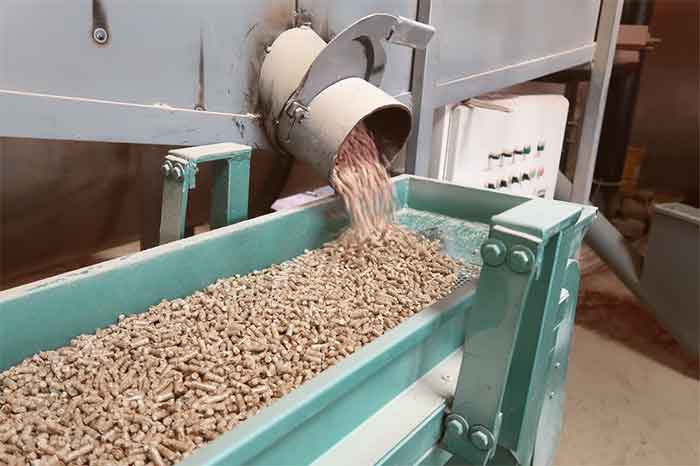 Bioenergy has a dark side: It contributes to air pollution… While many countries consider wood pellets “carbon neutral”, this is false. Greenhouse gas emissions from wood pellets—like carbon dioxide—are worse than coal. Europe and Asia are demanding wood pellets from the United States because it’s a “free pass” on their carbon accounting ledgers…Air pollution from biomass is common in homes that heat with wood. But the industrial production and combustion of wood pellets for electricity cause many of these same impacts… Making wood pellets creates a variety of pollutants, including particulates (fine dust), carbon monoxide, nitrogen, and other hazardous air pollutants (HAPs). To make wood pellets, the bioenergy industry dries and crushes wood, which releases a lot of dust—also known as particulate air pollution… Chopping wood won’t release a lot of air pollutants. Repeatedly crushing wood with big machines will. This type of dust is full of particulate air pollution, including volatile organic compounds, specific health-damaging air pollutants like formaldehyde, fine particulate air pollution (PM 2.5 and below). Pollutants like these cause many health problems. Fine dust, called PM2.5, is especially harmful. PM2.5 can get into the lungs and bloodstream. PM2.5 can hurt lung function, worsen asthma, and cause heart attacks and premature death: Particulate matter harms boys and children with high BMI even more than other children. Particular matter can cause airway inflammation, especially in asthmatic children. Particulate matter affects people more strongly in combination with higher temperatures. It can even harm folks with asthma and COPD (chronic obstructive pulmonary disease). PM2.5 was correlated with an increase in the risk of death from COVID-19. Air pollution also contributes to cardiovascular disease
Bioenergy has a dark side: It contributes to air pollution… While many countries consider wood pellets “carbon neutral”, this is false. Greenhouse gas emissions from wood pellets—like carbon dioxide—are worse than coal. Europe and Asia are demanding wood pellets from the United States because it’s a “free pass” on their carbon accounting ledgers…Air pollution from biomass is common in homes that heat with wood. But the industrial production and combustion of wood pellets for electricity cause many of these same impacts… Making wood pellets creates a variety of pollutants, including particulates (fine dust), carbon monoxide, nitrogen, and other hazardous air pollutants (HAPs). To make wood pellets, the bioenergy industry dries and crushes wood, which releases a lot of dust—also known as particulate air pollution… Chopping wood won’t release a lot of air pollutants. Repeatedly crushing wood with big machines will. This type of dust is full of particulate air pollution, including volatile organic compounds, specific health-damaging air pollutants like formaldehyde, fine particulate air pollution (PM 2.5 and below). Pollutants like these cause many health problems. Fine dust, called PM2.5, is especially harmful. PM2.5 can get into the lungs and bloodstream. PM2.5 can hurt lung function, worsen asthma, and cause heart attacks and premature death: Particulate matter harms boys and children with high BMI even more than other children. Particular matter can cause airway inflammation, especially in asthmatic children. Particulate matter affects people more strongly in combination with higher temperatures. It can even harm folks with asthma and COPD (chronic obstructive pulmonary disease). PM2.5 was correlated with an increase in the risk of death from COVID-19. Air pollution also contributes to cardiovascular disease
How Bioenergy Causes Air Pollution: The Dark Side of Renewable Energy

Bioenergy has a dark side: It contributes to air pollution… While many countries consider wood pellets “carbon neutral”, this is false. Greenhouse gas emissions from wood pellets—like carbon dioxide—are worse than coal. Europe and Asia are demanding wood pellets from the United States because it’s a “free pass” on their carbon accounting ledgers…Air pollution from biomass is…
Written by
Sam Davis
–
–
Originally Published in
